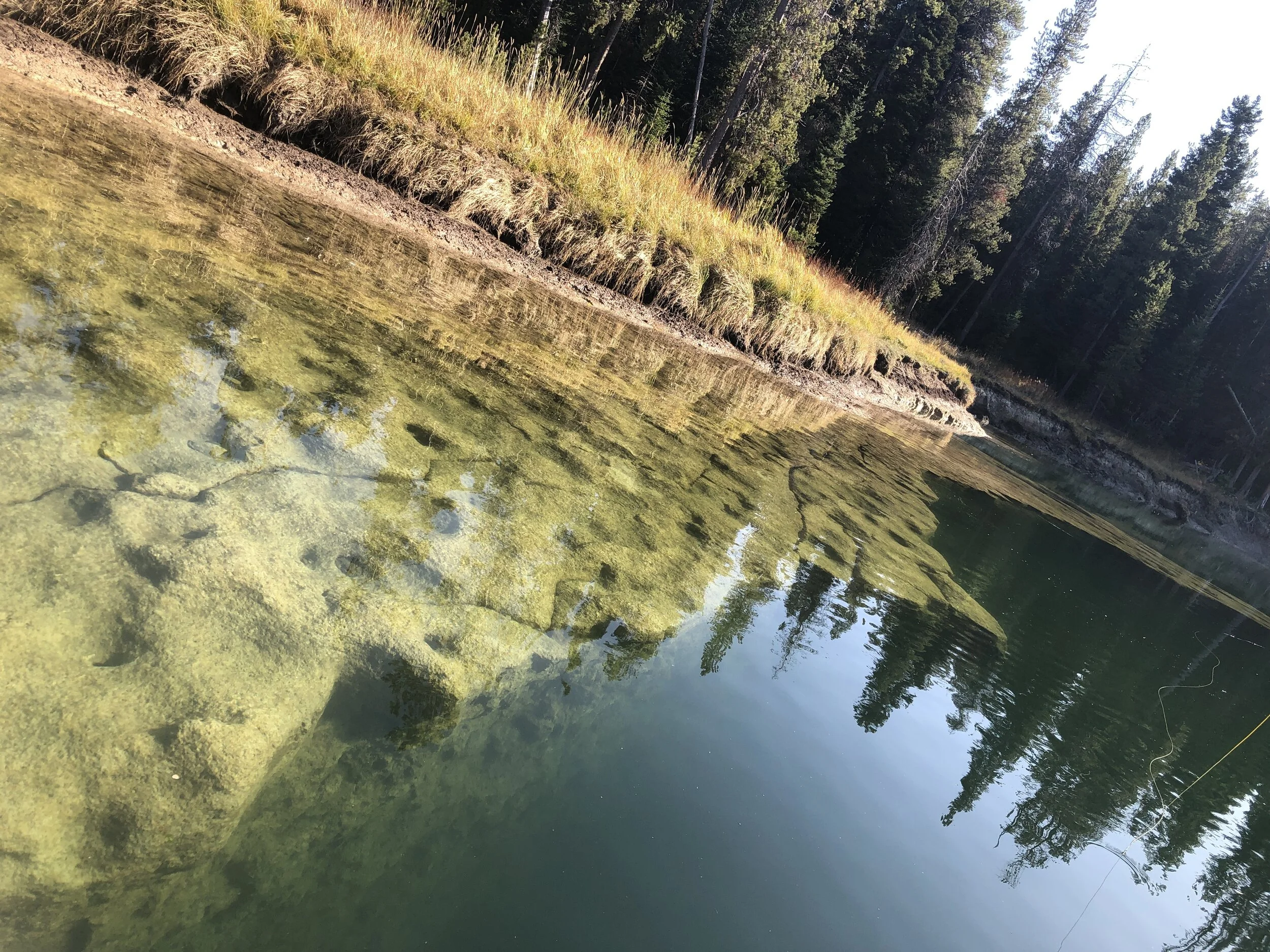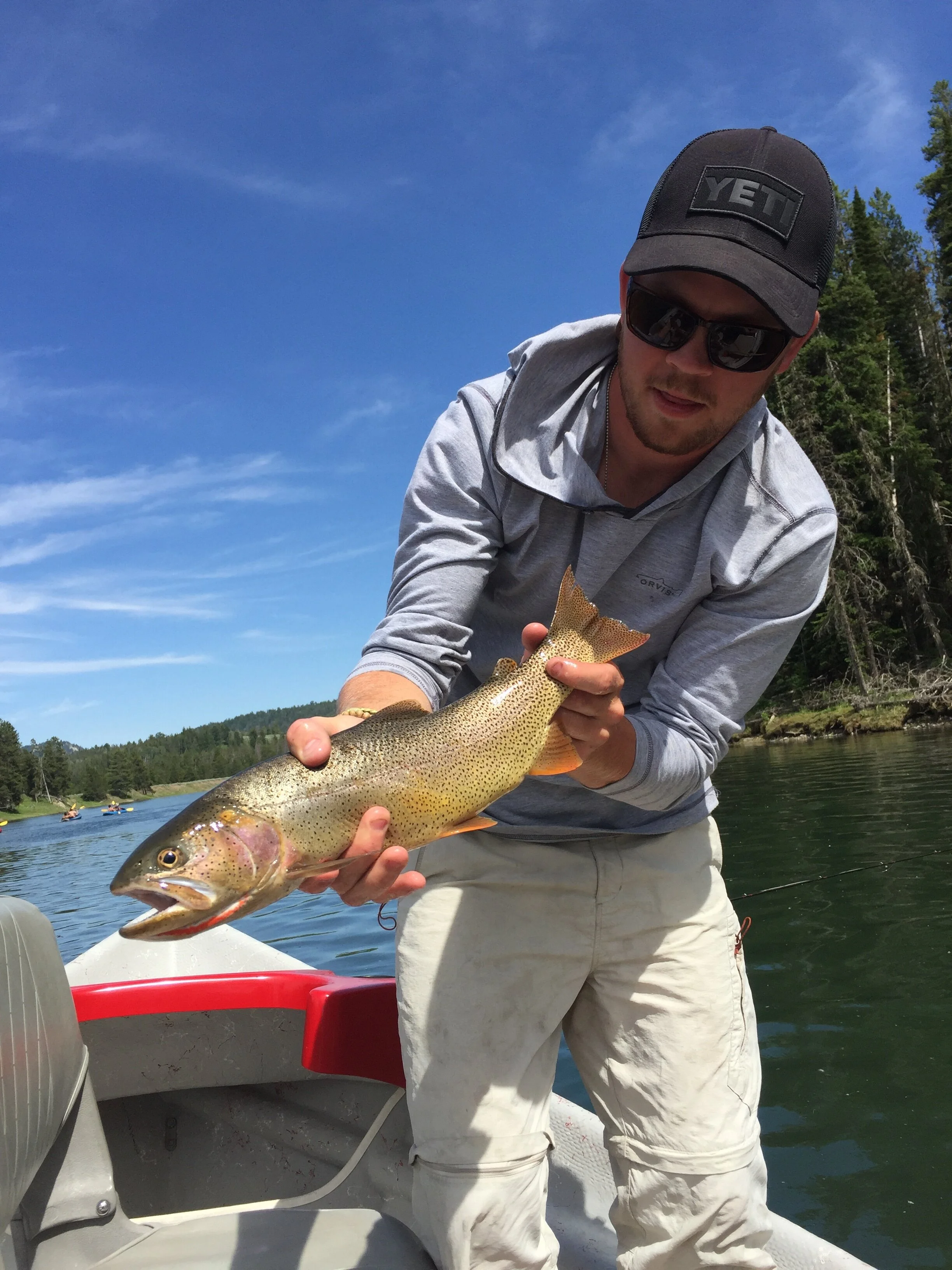After several weeks now of driving long distances from Jackson up toward Yellowstone National Park to search for Brown Trout along the Firehole and resident Cutthroat of Yellowstone Lake, we may be gaining a productive fishery closer to home.
For over a month of guiding the tailwater section below Jackson Lake Dam, the fishing will finally improve daily. I say this because today marked the first time in which flows from the Bureau of Reclamation have been cut to a level right around 2,000 CFS (2,050 to be exact).
This volume of water is important for several reasons but the most important being that each hole and eddy has been defined for many years now within this short section that ends at the Pacific Creek confluence — and 2,000 CFS is now low enough to finally push water out to the banks and back upstream — instead of one giant downstream push. These eddies now circulate food and — similar to Stripers magically appearing alongside Cinder Worms in the northeast salt ponds or Tarpon somehow knowing exactly when to ascend outgoing tides filled with Paolo Worms in the Keys — the native Snake River Cutthroat have an ingrained ability at realizing these fractional changes and when to begin exerting energy in search of food. As if they lay dormant, close to the bottom, monitoring that CFS gauge for when current and insects finally ripen.
The large flushes of water seem to also stunt the ability of early emerging Pale Morning Dun Mayflies to ascend to the surface and provide feeding opportunities for the trout.
I can count on two hands the amount of surface rises in the last two weeks. Today we saw dozens — the first time flows dipped below 2,200 CFS.
The seams have softened, with eddies now swirling with flotsam and insects now trapped as trout take hold in vacant lies from several days earlier.
Why exactly does this specific mark in water release make such a difference in the fishery? I’m not totally sure, but there are idiosyncrasies of these trout within this tailwater stretch of the Snake. Streamers twitched erratically through slow pools of stained water don’t produce like they would on the South Fork, or the Upper Delaware — both with Brown Trout populations. We do have eager surface feeders though, and fish that eat nymphs under a motionless indicator within an eddy. We also have another eager population of fish that stalk within less current — Mountain Whitefish. They don’t do as well within faster currents. Maybe that is providing a false sense as another yank on the Indicator from pre-dry fly fishing on the Snake.
Dam to PC
Hoping for more Sippers
#RiverRangeAdventures
#wherethewildstillholdsdominion



